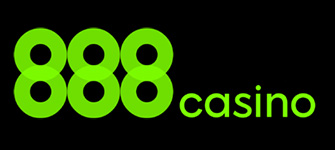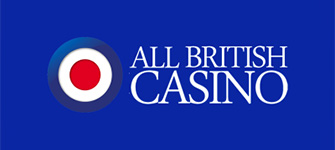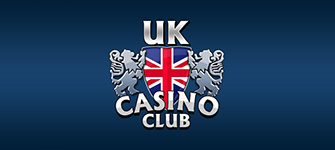Insurance in Blackjack
In the game of blackjack, no one can ensure you will not lose your chips but players, nevertheless, have the option to buy insurance when the dealer’s upcard is an ace. Insurance is one of the most misunderstood side bets on the entire casino floor. The introduction of insurance was an ingenious marketing idea on casinos’ behalf. Rather than helping the player, it increases the casino’s take thanks to the monstrous advantage it yields for the house.
The good news is taking insurance against the dealer’s ace is completely optional for the player. This proposition wager is available across all blackjack variations where hole cards are in play. You can also find it in variants that do not use hole cards under the European set of rules. Variations where both cards of the dealer are dealt face-up, like in Double Exposure, lack the insurance option for obvious reasons.
In this article, GamblingPlex will expand on how insurance works, how to purchase it, and why basic strategy players should abstain from ever taking insurance. We shall also draw a parallel with a similar rule, known as even-money, which also works to blackjack players’ disadvantage.
- ✓ How It Works
- ✓ Buying Insurance
- ✓ Partial Insurance
- ✓ Taking Even Money on Blackjacks
- ✓ EV of the Insurance Bet
- ✓ Insurance and Deck Number
Insurance – How It Works and How to Buy It
To begin with, taking or declining insurance is the first decision players face at the start of a round before deciding whether they should surrender, double, split a pair, hit or stand. Please note that insurance is a side bet that has nothing to do with your original hand or improving its chances against the dealer.
When you take insurance, you are betting that the dealer is going to hit a blackjack (a hand that consists of a ten-value card and an ace after the initial deal). Insurance is offered to players each time the dealer draws an ace as their upcard with the presumption they can protect their hands against a potential dealer blackjack. A player who accepts insurance is, in essence, betting the dealer’s face-down card has a value of 10.
When buying insurance, the player must make an additional wager that is equal to half of their initial wager. After all players at the table have bought or declined insurance, the dealer will peek at their face-down (hole) card to see if it indeed has a value of 10 to form a blackjack. The dealer will not announce they have a natural until all insurance bets have been placed. There are several possible scenarios for players who have bought insurance.
- If the dealer has a natural, then players will automatically win their insurance bets but lose their main bets unless they also have blackjacks. A winning insurance wager pays at odds of 2 to 1. To give you an example, a player’s main bet is $10 and they buy insurance for $5. The dealer has a blackjack, so the player loses $10 from their main wager and wins $10 (2 x $5) from insurance. Essentially, the player breaks even for this round. They would have been $10 down had they not posted the insurance wager.
- If the dealer does not have a natural, then the player loses their insurance bet but gets to play out their hand as usual. To proceed with the previous example, our hypothetical player will lose $5 from insurance. If they beat the dealer, they will receive 1.5x their initial wager for a blackjack, or $15 in this case, and even money, or $10, for any other winning hand. The player registers a net profit of $5 with a blackjack and breaks even with the $10 payout on all other winning hands, provided they have not split or doubled down.
- The last scenario is when both the dealer and the player have blackjacks, in which case the player hand pushes with the dealer’s and their main bet of $10 is returned. Provided that the player has bought insurance, they will register $5 in net earnings during this round.
Insurance is also available in European-style blackjack variants where no hole cards are used. Instead, the dealer gets only one upcard at the start of each round and draws the second one after everyone else has made their playing decisions.
Respectively, insurance is offered at the very start of the round whenever the dealer pulls out an ace as their first card. Insurance is never offered when the dealer’s first card has a value of 10 and this applies to all blackjack variations.
Buying Insurance
When playing blackjack in landbased casinos, one must follow a specific table etiquette when they make playing decisions and this includes buying insurance. The player announces verbally they want to take insurance and posts the required extra bet.
The additional chips for insurance are posted within the insurance line on the layout in front of the player’s corresponding betting box. It is always a good idea for the player to announce their intentions verbally. This is to prevent any misunderstandings regarding your moves. Plus, if the gesture you have used is incorrect but you have stated it verbally, the dealer will always correct you with a clarification.
In online RNG-based blackjack, players simply have to click the insurance button when it gets activated. Many multi-hand variations also allow you to accept or decline insurance on all hands for the round with a single click rather than doing so individually on each betting spot.
Partial Insurance
Earlier we mentioned players must make a side bet equal to half their main wager when buying insurance. While this statement is true, no written rule prohibits them from insuring a hand for less than their original wagers.
It is also possible to buy partial insurance only. Some people use this tactic for hedge betting as well as for the purposes of decreasing the variance of the game. All versed and seasoned players will confirm blackjack is a game where one can suffer huge swings, financially and results-wise.
Naturally, skilled players will not hesitate to adopt any viable approach that helps them make these swings more bearable and eliminate the negative impact they have on one’s mental state. Buying partial insurance is possible in both brick-and-mortar and some online live casinos. It is also worth noting this tactic is applicable only if one plays to advantage by counting cards.
Online blackjack players use partial insurance when they want to decrease the variance they face and boost the advantage they get from free bonus play. Such bonuses normally have terms attached to them that require the player to wager a specific amount of their own funds before withdrawing their bonus-associated winnings.
Advantage players aim to decrease variance while clearing this bonus wagering to increase the value they extract from free play. One way to achieve this is by insuring their hands for less than half their main bet.
With this approach, the likelihood of generating great profits drops but that of losing all your bonus money also decreases. In other words, buying partial insurance decreases both variance and the player’s expected value.
It is also worth mentioning that advantage players would use this approach only when the composition of the remaining cards in the shoe or deck justifies it. This usually happens when the shoe starts to get depleted of low cards.
Under such conditions, the likelihood of the dealer having a ten in the hole is greater. Advantage players would then insure their hands for 25%, 50%, or 70% of their main bets and buy full insurance when the true count is 2 or higher.
Taking Even Money on Blackjacks
Some casinos offer players even money for their blackjacks, which is exactly the same thing as buying insurance. Allow us to expand on that. The only difference here is that even money is offered whenever the player gets dealt a blackjack while the dealer is showing an ace.
The dealer would then offer the player to pay them out at even-money odds or 1 to 1. They say the Devil is in the details and this could not be truer than it is in this case. If you are observant in one such situation, you will undoubtedly notice that the money changes hands before the dealer actually peeks under their hole card.
In other words, there is a good chance that you will accept the reduced payout only to find out the dealer does not have a ten in the hole mere seconds later. The outcomes for the player coincide with those for the insurance wager. Furthermore, even money is just as bad for basic strategy players as is insurance as you shall see next.
EV of the Insurance Bet
Casual blackjack players are an odd breed. They are presented with a mathematically sound strategy that shows them exactly how to play their hands in every possible situation to reduce the house edge, yet many of them still choose to act on hunches and intuition. Such people literally end up paying the price in the long term.
In this vein, many recreational players are in the habit of regularly buying insurance to “protect” their hands against the dealer’s aces but end up suffering the consequences as a result. Others insure only “good” hands like pat 19, pat 20, and blackjacks. If you are one of those players, it is time for a reality check.
Insurance is nothing but an ingenious marketing move on casinos’ behalf that lures clueless patrons into thinking it protects their hands. The same goes for the even-money version of insurance. Unfortunately, this could not be further from the truth since insurance has the opposite effect, increasing rather than decreasing the casino’s advantage.
Now, why is that? Above all, insurance has nil impact on the odds of winning your main bet; it does not affect the dealer’s chances of having a blackjack, either. This is nothing but a proposition wager where you are betting that the dealer’s hole card is a ten. Let’s have a look at what the numbers say to better understand why this side bet is such a moneymaker from the house’s perspective.
Blackjacks Occur Only 30% of the Time
The odds for insurance are not really favourable for the player. As we already clarified, this side wager is available only when the dealer has an ace as their face-up card. The problem is the dealer would get blackjacks approximately 30% of the time only in single-deck games so insuring your hands consistently will cost you a small fortune in the long run.
The figures speak clearly enough. Let’s assume you play single-deck games where 52 cards are in play. Insurance becomes a break-even wager only on condition that tens occur once in every three cards, or a little over 33% of the time on average.
Unfortunately, a single deck contains only 16 ten-value cards, which is to say tens are dealt roughly 30.76% of the time. In turn, this means a ten is dealt only once in every 3.2 cards. You can probably see where this is going. Needless to say, this also affects the house edge, yielding a bigger advantage for the casino for the insurance bet. But let’s continue with the example to see what EV does this terrible bet yield for the player.
You are sitting at a single-deck table and the dealer has just reshuffled the cards. You are dealt 9/8 while the dealer has pulled an ace. Thus, there are still 16 ten-value cards in play but the overall number of cards has now dropped to 49.
It follows the probability of the dealer having a ten is 16/49, or 0.326530, whereas that of them having a card of any other denomination is 33/49 (49-16=33), or 0.673469. Suppose your main bet on the 9/8 is $20 and you buy full insurance for $10 for simplicity’s sake. If it wins, the insurance wager will earn you $20 (2 to 1). In this instance, your expected value will be equal to:
EV = [16/49 * (+2 units)] + [33/49 *(-1 unit)] = -0.020408
Notice the minus in front? This negative number represents the casino’s edge which is 2.04% for the insurance wager when a single deck is in play. And yes, your expectation is obviously negative here. You will lose $2.04 per every $100 you spend on insurance over the long haul. This is why insurance is never featured on basic strategy cards.
There is simply no reason to include it because placing this side bet is never a good idea with basic strategy. Mind you, this is the best scenario players face when buying insurance. Things get much tougher for patrons when more decks are introduced into play and shortly you shall see why.
Insurance and Deck Number
Some players make the assumption the dealer’s chances of hitting blackjacks increase proportionately to deck number. Such people are always quick to “protect” themselves against the dealer’s ace in shoe games.
Unfortunately, this line of reasoning is faulty, not to mention costly in the long run. If you have any previous experience with casino card games like baccarat and blackjack, you probably are familiar with the fact that the greater the deck number is, the higher the house edge gets.
This tendency is also observed with the house’s advantage for insurance. Just check out the calculations below and you will immediately see the casinos’ advantage for the insurance bet also grows proportionally to deck number.
House Edge on Insurance with 2 Decks
EV = [32/101 * (2)} + [69/101 * (-1)] = -0.049504
House Edge on Insurance with 4 Decks
EV = [64/205 × (2)] + [141/205 × (-1)] = -0.063414
House Edge on Insurance with 6 Decks
EV = [96/309 × (2)] + [213/309 × (-1)] = -0.067961
House Edge on Insurance with 8 Decks
EV = [128/413 × (2)] + [285/413 × (-1)] = -0.0702179
Just for clarification, these figures are an extension of our previous example where you start afresh after the reshuffle with two non-ten cards against a dealer with an ace. The increase in house edge becomes less pronounced the more decks are introduced because of the effect of card removal. It makes sense that when you pull out a ten from an eight-deck shoe, this card’s absence will not be as dramatic compared to the effect of pulling a ten out of a single deck.


 PlayOJO Casino
PlayOJO Casino 888casino
888casino All British Casino
All British Casino Casino Action
Casino Action UK Casino Club
UK Casino Club